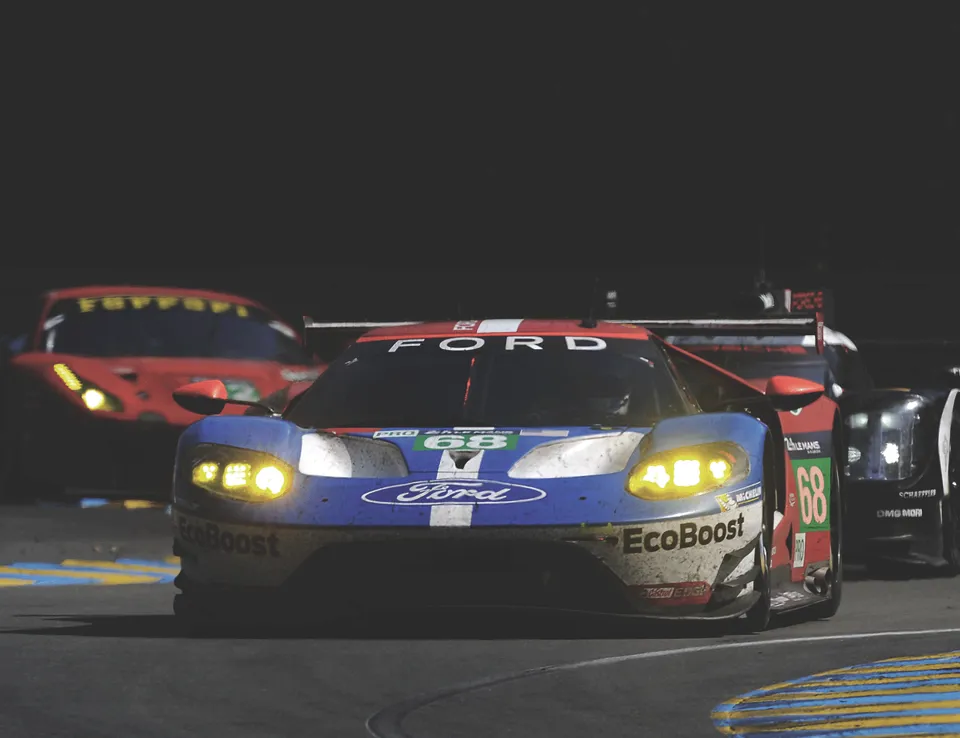
Ricardo developed the transaxle for the BMW M6 GT3
26 Sep 2022
Customer racing programmes rely on cost-effective vehicles which provide maximum performance and reliability whilst offering the best possible racing experience worthy of the brand they represent.
In 2015, BMW Motorsport sought to replace the Z4 GT3 with a new vehicle. The BMW M6 GT3 would prove to be quite the departure from its predecessor in just about every aspect of its design. To support the development of this new racing platform, BMW required a completely new transaxle with reliability, efficiency, and ease of maintenance at the heart of its design.
By 2015, Ricardo had a strong track record for development and supply of motorsport technology for GT applications. This included transmission support for Japanese OEMs, Toyota and Honda, for their Super GT campaigns. Ricardo also supported the development of a new generation of GT3 compliant transaxles which were proving to be a popular solution for some of the other world leading OEMs. This gave BMW confidence to appoint Ricardo to develop the solution for the M6 GT3.
Developing the transaxle for the BMW M6 GT3
The package demands of the BMW M6 GT3 were significantly different to the Z4. A larger wheelbase to improve stability, and centrally-positioned driver’s seat were just two of the changes that made it necessary to design a new transaxle solution from a clean sheet.
Ricardo and BMW specced a completely new semi-automatic transverse transaxle with a sequential six-speed plus reverse racing gearbox. The transmission was magnesium cased with fully-formed ground gears, and a ramp and plate differential with a configurable preload.
Building on learning from the Super GT specification, the transaxle was designed to be highly compact to meet the packaging challenges of the M6. Additionally, the custom designed casing made provision for a number of ancillary mountings and drives to be located on the gearbox improving overall packaging and vehicle integration for BMW.
This customisable approach to the transmission also improved the vehicle’s serviceability. For example, assessing the wear of the transmission prior to any disassembly was made possible with the dog inspection blanks provided and removable side covers assisted with quicker and easier swapping of ratios on the shafts within the gearbox. This is just one way that the requirement for ease of maintenance was achieved.
Getting the maximum performance from the new design was also crucial. The transmission design allowed customers to optimise the performance of the car on turn-in, apex and corner exit. This made the vehicle incredibly adaptable to a wide variety of racing conditions that drivers would face. The M6 also benefited from Ricardo’s internal CFD analysis on the oil lubrication system. This ensured that appropriate oil flow rates were directed at the critical zones within the transmission. This, combined with the tilt analysis, ensured appropriate flow was maintained even under cornering loads, further improving vehicle performance and durability.
In addition to the design and development of the transaxle, Ricardo also offered BMW and its customers a return-to-base inspection, serving and rebuild facility. This ensured that the post-sales customer service for BMW M6 GT3 owners was as robust as possible.
This facility allowed customers to book their transmissions for a full assessment, component replacement and rebuild at a clear, published cost. This offering also included an end-of-line test to ensure that the transmission was race-ready. This service proved very popular as it freed up customer teams with limited capacity to focus on race preparations whilst Ricardo serviced the transmission on behalf of the OEM.
The M6 GT3 also went through an EVO upgrade in 2018 which maintained its very competitive position at the head of many GT3 races. Whilst the more obvious changes to the EVO model were the aerodynamic enhancements, there were minor upgrades to the transmission which focussed on durability and cost management.
A legacy of success for BMW M6 GT3 customers
The BMW M6 GT3 debuted at the 66th IAA Cars 2015 in Frankfurt in 2015. It went on to be a popular and competitive offering in the GT3 market, often running head-to-head against the Porsche 911 and the Ferrari 488.
With BMW customers frequently celebrating successes in VLN, Intercontinental GT Challenge, and IMSA, it is no wonder that the BMW M6 GT3 became a firm favourite amongst the fans and drivers alike Notable wins include multiple successes at the demanding Spa 24 hours and the Nürburgring 24 hours, one of the most challenging endurance events. BMW’s customers continued to enjoy significant success in the M6 GT3 right up to until its recent retirement in 2021 with wins at Kaylami and Indianapolis in 2020.
Andrew Borstel, Programme Manager at Ricardo, looks back fondly on the BMW M6 GT3 programme:
“The M6 GT3 transaxle programme provided us with an excellent opportunity to develop an optimise a new package for our clients at BMW. It was fantastic to be able to bring our experience in the Super GT world to the table and tailor these capabilities to deliver a technical solution that both Ricardo and BMW could be proud of.”
Martin Starkey, Managing Director of Ricardo’s Performance Products segment adds:
“It was a great pleasure to be able to work with BMW on this iconic product. We are proud of the long-term working relationship that was developed during this programme and of how successful the vehicle was up to and including its final year in competition. We are always thrilled to be able to develop bespoke, clean sheet technical solutions as unique as the requirements of our clients.
Join us in the next instalment when we will look back at the historic and victorious return of one of the world's largest brands to La Sarthe with a modern day interpretation of a Le Mans great.










